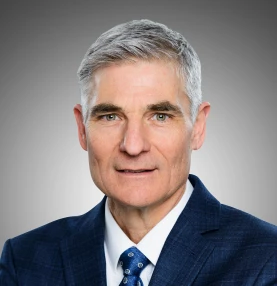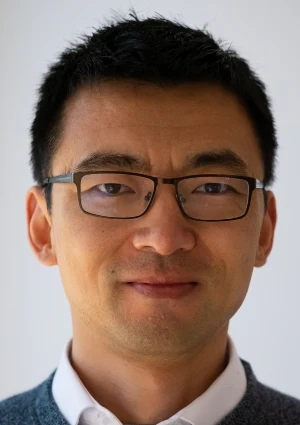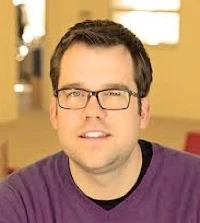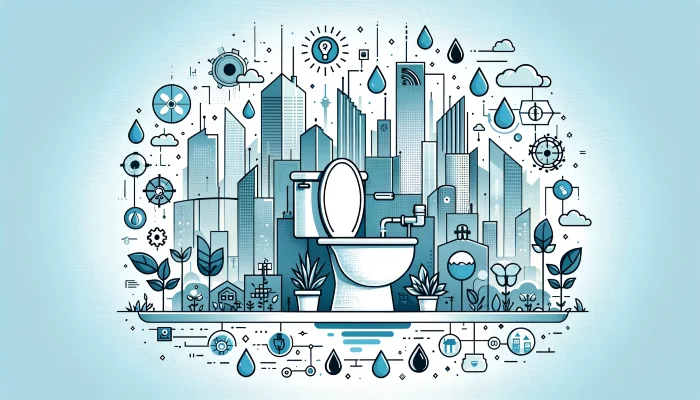Imagine a city where your morning shower, laundry day, and even the toilet flush don’t end up as wasted resources but as vital components of a sustainable future. This isn’t a distant dream; it’s the innovative reality we’re stepping into, thanks to the wonders of science.
Every day, the U.S. processes about 34 billion gallons of wastewater, a resource that’s traditionally seen as unusable. Yet, as we face the challenges of extreme heat, water shortages, and booming populations, scientists, and companies like Epic Cleantec are revolutionizing how we view and utilize this so-called waste. They’re extracting drinkable water, energy, and even compost from what flows down our drains.
In the heart of San Francisco, beneath the luxury apartments that tower above, Epic Cleantec is pioneering a method that transforms gray water (that’s water without human waste or food scraps) into something remarkable. By filtering and disinfecting this water, they’re able to repurpose it for non-drinkable needs within the building, significantly reducing the waste of wastewater.
Aaron Tartakovsky, the visionary behind Epic Cleantec, shares, “By regulation, we’re only reusing the water for nonpotable applications. Scientifically, we can produce drinking-water quality.” The proof? The company has even crafted a beer from recycled water, showcasing the potential of this technology.

But the innovation doesn’t stop at water recycling. Epic Cleantec is harnessing the hidden energy and valuable nutrients in wastewater to create renewable energy and soil amendments, pushing the boundaries of what we can reclaim from what we flush away.
As Tartakovsky demonstrates with a hands-on experience of the composted material, it’s clear that what was once considered waste is now a resource ripe for the taking. This approach isn’t only making strides in individual buildings but is also being adopted on a municipal level, lightening the load on traditional water treatment plants, and offering a blueprint for a more sustainable urban future.
Peter Grevatt, CEO of the Water Research Foundation, put it simply, “Theoretically, the used water that flows out of your home contains 10 times the amount of energy it takes for a treatment facility to process it.”
The Ripple Effect of Urban Expansion on Water
As cities swell in size and affluence, their thirst for water intensifies, not just inch by inch, but in leaps and bounds. This burgeoning demand, set against the backdrop of climate change, drying out key regions, paints a complex picture of our urban future. By 2050, with 70% of humanity calling cities their home, our approach to water use and recycling becomes not just a matter of convenience but of crucial sustainability.

A study exploring urban growth highlights a curious trend: as cities grow, their greenhouse gas emissions increase at a slower pace thanks to efficiencies like public transport.
However, wastewater generation skyrockets, outpacing population growth. This is linked to wealth creation; as cities become richer, their water use becomes more lavish, despite more efficient energy usage. This poses a significant challenge: the more affluent a city, the greater its potential for water waste.

The real conundrum lies in our current wastewater management strategies—or the lack thereof. Dumping treated water into the environment, rather than reusing it, may soon be viewed by future generations as a glaring oversight of our era. “We just dumped wastewater into the ocean rather than pumping it back into the farmland,” reflects Chris Kempes of the Santa Fe Institute, underscoring a missed opportunity for sustainable practice.
Yet, hope isn’t lost. The technology for turning wastewater into potable water has been around for decades. San Diego, a pioneer in water recycling since 1981, showcases the potential of advanced purification processes. By treating wastewater with ozone and ultrafine membranes, the city will soon deliver drinking water to its residents, aiming to meet half of its water needs this way by 2035.

Recycling Wastewater Solids Is Complex
The journey towards sustainable wastewater management doesn’t stop with liquid recycling; it extends into the challenging realm of transforming solid human waste into beneficial resources. In the U.S., the destiny of this waste, known as biosolids or sludge, varies: a portion enriches our lands, another part ends up in landfills, and some is incinerated.
However, this process is not without its dilemmas, as sludge carries not just valuable nutrients, but also harmful chemicals and microplastics introduced through our daily activities.
In an eye-opening move, Maine has banned the use of sludge as fertilizer, spotlighting the risks posed by PFAS chemicals—substances linked to serious health issues. This step underscores the urgent need for innovation in isolating harmful contaminants to safeguard our environment while still harnessing the potential locked within our waste.
Enter biochar, a promising alternative that converts organic matter into concentrated carbon through pyrolysis, offering a cleaner, more transportable solution. This method not only neutralizes pathogens but also provides an eco-friendly way to improve agricultural productivity and sequester carbon. The shift towards biochar and the exploration of converting wastewater solids into clean energy and fertilizers represent a paradigm shift in how we perceive and manage waste.

The creation of biogas from solid waste through anaerobic digestion is another breakthrough, offering a sustainable energy source that completes a carbon loop, thus reducing our carbon footprint. This approach has the potential not just to power wastewater facilities but also to provide heating for nearby buildings, showcasing a circular economy in action.
More To Discover
- Red Mud Goes Green: How a Simple Process is Turning Mining Waste into Climate-Friendly Steel
- NY Attorney General Sues Pepsi Over Alarming Plastic Pollution in Buffalo River, Endangering Public Health and The Environmental
- World’s Tiniest Marine Mammal Faces Imminent Extinction In First Alert Issued By International Whaling Commission
- Conventional Wind Energy: A Design Deadly for Birds And Why They Are Paying For Our Greenwashed Ideals

Moreover, the potential conversion of volatile fatty acids, byproducts of the biogas process, into fuels for transportation further exemplifies the untapped value in wastewater solids. The idea of recycling wastewater not just for irrigation but also for enhancing urban agriculture by retaining essential nutrients like nitrogen and phosphorus in the water points to a future where every drop and every solid matter is seen as a resource rather than waste.
“Recycling is ubiquitous in nature. If there’s an untapped source of energy or nutrients, someone finds a way to use it,” Kempes explained.
This emerging vision of wastewater management—where water flows from our homes back to our cities and farms in a closed loop—reflects a profound alignment with nature’s principles of recycling and efficiency. It’s a future where the very notion of waste is redefined, embracing the possibilities of turning what was once considered unusable into vital resources for our communities.
As we look towards this promising horizon, it’s clear that our relationship with water and waste is on the cusp of a transformative shift, moving us closer to a sustainable symbiosis with our planet.




















